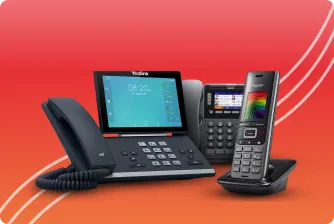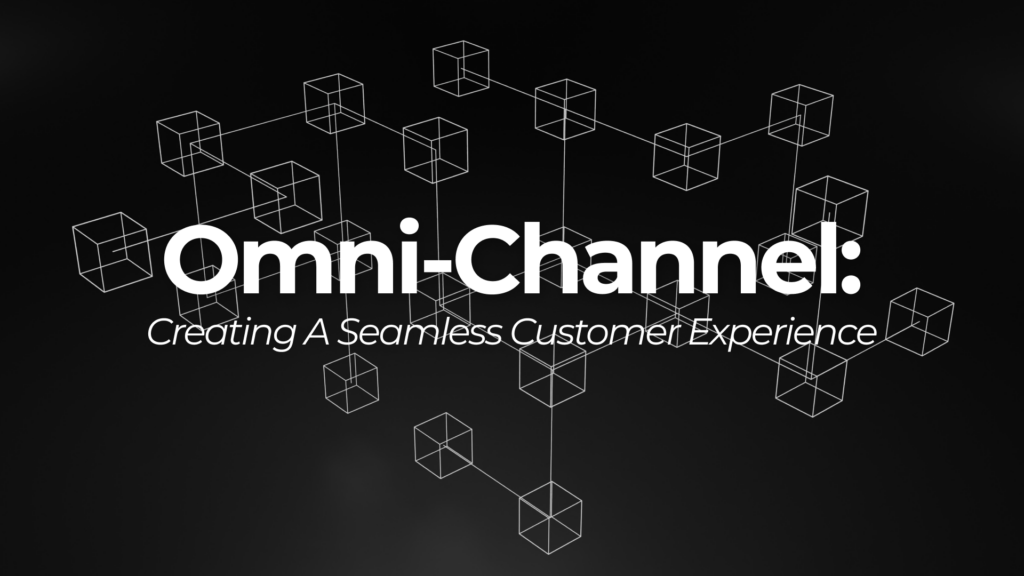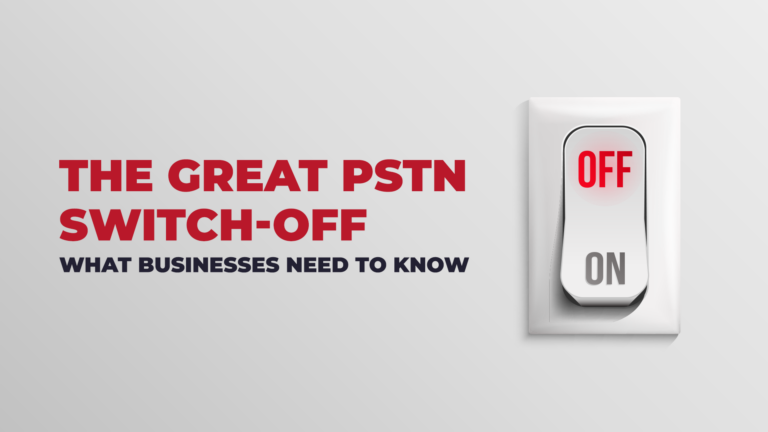In today’s digital age, creating a seamless omnichannel experience has become a vital component of successful customer engagement and retention. But what exactly is an omnichannel experience? Well, it refers to the integration of various channels, such as physical stores, websites, mobile apps, social media platforms, and more, to provide customers with a consistent and cohesive journey across all touchpoints.
Why is this important? Well, customers now expect a seamless transition as they move between channels, and meeting their expectations is crucial for building brand loyalty and driving business growth. When customers can effortlessly switch from browsing your website to visiting a store or interacting with your brand on social media, it creates a sense of continuity and enhances their overall experience.
So, in this blog, we’ll delve into the world of omnichannel experiences, exploring strategies to help you create a seamless customer journey across all your channels. From understanding the customer journey and integrating channels effectively to optimising mobile experiences and implementing personalisation, we’ll cover key aspects that will empower your business to excel in the digital landscape.
Let’s dive in and discover how you can deliver an exceptional omnichannel experience for your customers…
Understanding the Customer Journey
To create a seamless omnichannel experience, it’s essential to have a deep understanding of your customer’s journey across various channels. By mapping their interactions and touchpoints, you can gain valuable insights into their preferences, behaviours, and expectations.
Start by identifying the different channels and touchpoints your customers engage with, such as your website, social media platforms, physical stores, customer service helplines, or mobile apps. This comprehensive view will help you identify potential gaps or opportunities for improvement within the customer journey.
Once you have a clear picture of the channels involved, analyse customer data to gain insights into their preferences and behaviours at each touchpoint. This data can include browsing patterns, purchase history, feedback, or support interactions. Understanding these insights will allow you to personalise their experiences and tailor your offerings to better suit their needs.
Furthermore, consider implementing tools like customer surveys, focus groups, or user testing to gather qualitative feedback. These methods can provide valuable insights into customer pain points, expectations, and areas where your omnichannel experience may fall short.
By gaining a holistic understanding of your customer’s journey, you can identify areas for improvement and deliver a consistent experience across all touchpoints. This, in turn, fosters customer satisfaction, builds trust, and increases their likelihood of becoming repeat and regular customers.
Integration of Channels
An effective omnichannel experience relies on the seamless integration of different channels to provide a cohesive and unified customer journey. Integration ensures that customers can transition effortlessly between channels while experiencing consistent messaging, branding, and interactions.
To achieve this, consider implementing a centralised customer data system. This system consolidates customer information from various touchpoints, allowing you to have a holistic view of each customer’s interactions and preferences. By having access to this data, you can provide personalised recommendations, targeted marketing campaigns, and tailored experiences across all channels.
Consistency in messaging and branding is equally important. Ensure that your brand’s values, tone, and visual identity remain consistent across different channels. This helps customers recognise and connect with your brand, regardless of the platform they are engaging with.
Additionally, make efforts to synchronise customer experiences across channels. For instance, if a customer adds items to their online shopping cart, they should be able to access and complete the purchase from their mobile device or in-store. Real-time inventory updates and product availability information should be accessible across all channels to avoid disappointments or inconsistencies.
By integrating channels effectively, you provide customers with a seamless and unified experience, regardless of the touchpoint they choose. This creates a sense of continuity and builds trust in your brand.
Mobile Optimisation
In today’s mobile-driven world, optimising your channels for mobile devices is no longer an option but a necessity. With more and more customers using smartphones and tablets to interact with businesses, providing a seamless mobile experience is crucial for a successful omnichannel strategy.
Start by designing mobile-friendly websites and applications. Ensure that your website is responsive and adjusts smoothly to different screen sizes, providing a user-friendly interface and easy navigation. Streamline the checkout process on mobile devices to minimise friction and enhance the overall shopping experience.
Consider implementing mobile payment options to facilitate quick and convenient transactions. Popular mobile payment platforms, such as Apple Pay or Google Pay, can simplify the checkout process and eliminate the need for customers to enter their payment details manually.
Personalisation is also key in mobile optimisation. Leverage mobile-specific features, such as location-based services or push notifications, to deliver tailored offers and promotions to customers based on their real-time context. This level of personalisation enhances engagement and increases the likelihood of conversion.
Furthermore, explore opportunities to create mobile-exclusive experiences where you can. Whether it’s through interactive mobile apps, augmented reality features, or gamification elements, adding unique mobile experiences can differentiate your brand and capture customers’ attention.
By optimising your channels for mobile devices, you ensure that customers can seamlessly interact with your brand, make purchases, and access information on the go – regardless of device. This not only enhances the omnichannel experience but also meets the growing expectations of mobile-savvy modern customers.
Personalisation and Customer Segmentation
In today’s digital landscape, customers expect personalised experiences tailored to their specific needs and preferences. Personalisation plays a crucial role in creating a seamless omnichannel experience that resonates with your customers and fosters deeper connections with your brand.
Start by leveraging customer data to understand their preferences, behaviours, and purchase history. Analyse this data to segment your customers into distinct groups based on common characteristics, such as demographics, purchase patterns, or engagement levels. By segmenting your customer base, you can create targeted marketing campaigns and deliver personalised content that aligns with their interests.
Use the insights gathered from customer data to personalise interactions across channels. Whether it’s personalised recommendations based on browsing history, targeted email campaigns tailored to specific segments, or customised product suggestions, personalisation allows you to provide relevant and valuable experiences that engage customers at every touchpoint.
Implementing dynamic content that adapts to each customer’s preferences is another effective personalisation strategy. By displaying personalised product recommendations, relevant promotions, or customised landing pages, you can create a tailored experience that guides customers toward their desired outcomes.
Furthermore, consider utilising automation and artificial intelligence to enhance personalisation efforts. AI-powered algorithms can analyse customer data in real-time and deliver personalised experiences at scale, ensuring that every customer feels seen and valued.
By prioritising personalisation and customer segmentation, you elevate the omnichannel experience by delivering tailored content, recommendations, and offers. This not only increases customer engagement and satisfaction but also boosts conversion rates and fosters long-term customer loyalty.
Seamless Transition Between Channels
Enabling a seamless transition between channels is a critical aspect of creating a cohesive omnichannel experience for your customers. Customers should be able to move effortlessly between online and offline channels without any disruptions or inconsistencies. Here’s how you can ensure a smooth transition at every touchpoint.
Firstly, implement features that facilitate a seamless experience. For example, allow customers to save items for later or create wish lists that can be accessed across multiple channels. This enables them to start their journey on one channel and continue it on another without losing any progress.
Ensure that inventory and product information are consistently updated across all channels in real-time. This prevents customers from encountering situations where a product appears available online but is out of stock in-store, or vice versa. Accurate and up-to-date information builds trust and avoids disappointments.
Invest in technologies that enable cross-channel integration. For instance, if a customer initiates a support conversation on your website and then switches to a mobile app, their conversation history and context should seamlessly carry over. This saves customers from repeating themselves and provides a smooth and personalised support experience. In addition, train your staff to provide consistent and knowledgeable support across all channels. This means ensuring that customer service representatives have access to the same information and can assist customers regardless of the channel they choose to interact through.
By prioritising a seamless transition between channels, you eliminate friction points in the customer journey, which leads to improved satisfaction and loyalty. Customers can enjoy a consistent and uninterrupted experience, enhancing their overall perception of your brand.
Data Analytics and Measurement
Data analytics and measurement play a crucial role in optimising the omnichannel experience for your customers. By collecting and analysing data from various channels, you gain valuable insights into customer behaviours, preferences, and interactions, allowing you to make data-driven decisions and continuously improve the customer journey.
Start by collecting relevant data from each touchpoint, including website analytics, social media engagement metrics, transactional data, and customer feedback. This data provides a comprehensive view of how customers are engaging with your brand across channels and helps identify areas for improvement.
Utilise data analytics tools to extract meaningful insights from the collected data. By analysing customer behaviour patterns, you can identify trends, customer segments, and potential pain points that impact their omnichannel experience. This knowledge enables you to make informed decisions and implement targeted strategies that enhance customer satisfaction.
Measure the effectiveness of your omnichannel strategies through key performance indicators (KPIs). Track metrics such as customer retention rates, conversion rates, customer satisfaction scores, and average order value. By monitoring these metrics, you can assess the impact of your efforts and make necessary adjustments to optimise the customer journey. Implement A/B testing to experiment with different approaches and measure their impact on customer engagement and conversions. This allows you to refine your omnichannel strategies and continuously improve the customer experience based on data-backed insights.
By leveraging data analytics and measurement, you can gain a deeper understanding of your customers, identify areas for enhancement, and make data-driven decisions to create a seamless and personalised omnichannel experience.
Customer Support and Engagement
Customer support and engagement are integral components of a seamless omnichannel experience. Providing consistent and exceptional support across all channels not only resolves customer issues but also strengthens their connection with your brand. Here’s how you can prioritise customer support and engagement in your omnichannel strategy.
Offer consistent support across channels, ensuring that customers can access assistance seamlessly. Whether they reach out through your website, social media platforms, email, phone, or in-person interactions, each touchpoint should provide a prompt and helpful response. Consistency in support builds trust and reassures customers that their concerns are valued and will be addressed efficiently.
Implement chatbots and AI-powered customer service tools to enhance support capabilities. These technologies can handle common inquiries, provide instant responses, and route complex issues to human agents when necessary. By leveraging automation, you can provide round-the-clock support and reduce response times, enhancing the overall customer experience.
Encourage customer feedback and reviews to foster engagement. Actively seek feedback through surveys, social media interactions, or post-purchase follow-ups. This demonstrates your commitment to customer satisfaction and gives customers a platform to voice their opinions. Additionally, respond to reviews and engage in conversations to show that you value their feedback and are dedicated to continuous improvement.
By prioritising customer support and engagement, you not only resolve issues efficiently but also build meaningful relationships with your customers. Consistent and personalised support across channels strengthens their trust and loyalty, leading to long-term customer satisfaction and advocacy.
Conclusion
Creating a seamless omnichannel experience is essential in today’s digital landscape to meet customer expectations, foster loyalty, and drive business growth. By integrating channels effectively, you can deliver exceptional customer experiences across all touchpoints.
Remember, a customer-centric approach is key. Understanding your customers’ journey, preferences, and behaviours allows you to tailor your offerings and provide personalised experiences that resonate with them. Consistency in messaging, branding, and support across channels builds trust and strengthens the relationship between your brand and customers.
Here at Yo, we’re all about improving the success of the businesses we deal with. So, If you are interested in learning more about improving your business development, or generally future-proofing your business – enter your contact details into the form below and we’ll be in touch with how we can help you and your business TODAY!











